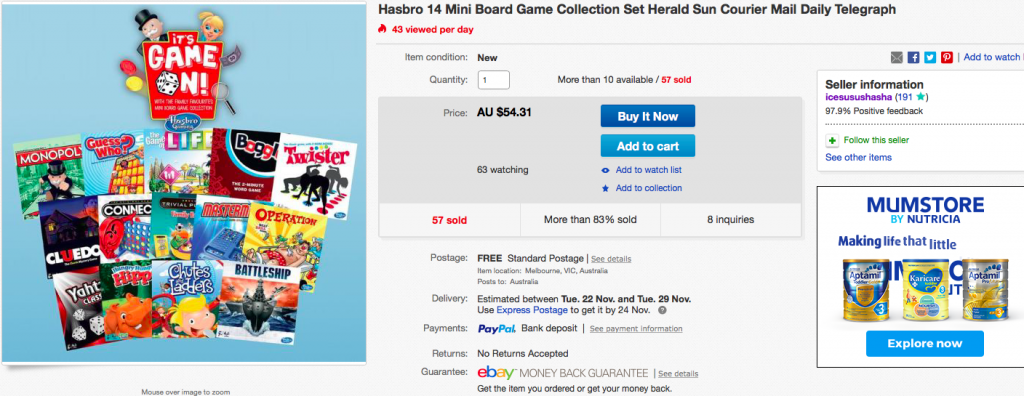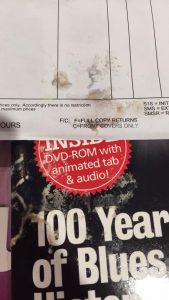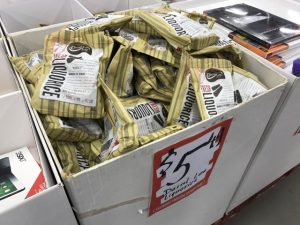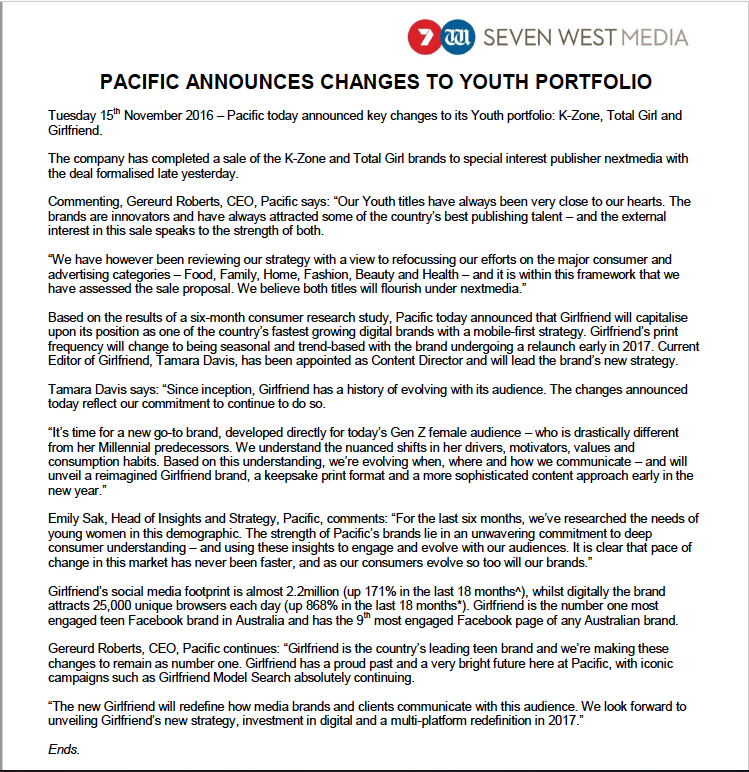This has been a challenging quarter for newsagents. The overall traffic decline is one of the largest in recent benchmark studies.
The decline is due to declines in traffic for core newsagency lines: newspapers, magazines, tobacco and stationery. The increase in transaction count for lotteries is not driving an increase in non lottery product purchases. Indeed, lotteries is one of the most inefficient product categories in newsagencies – by this I mean, people purchase lottery products and nothing else in a visit, like the majority of newspaper purchases.
The good news in the survey is the improved performance in newsagency businesses embracing change. New traffic drivers are working and expansion in gifts, toys and other better margin categories are improving the overall GP story in these businesses.
There is no doubt change is afoot in the newsagency channel. There is considerable evidence in this latest benchmark study of greater difference between businesses. The gap between those performing the best and those performing the worst is the biggest I have ever seen.
The data pool for this survey is the broadest I have had in the last two years in terms of different rooftops represented and number. I am grateful to the bigger pool of 170+ newsagents participating.
There is good news in these benchmark results, especially for newsagents who are working their business as retailers.
- Customer traffic. 71% of newsagents report average decline of 3.8%.
- Overall sales. 64% reported an average revenue decline of 4.6%.
- Basket depth. 61% report a .7% decrease in basket size.
- Basket dollar value. 66% report a decrease in basket value of 1.3%.
- 31% of respondents use a structured loyalty offer such as points or some other discount.
Benchmark results by key departments:
- Magazines. 85% of report an average decline in unit sales of 11.3%. The average decline in weeklies is 10.1%. The decline is not as bad outside the top selling titles.
- Newspapers. 85% report average decline in over the counter unit sales of 8.7%.
- Greeting cards. 64% of report average revenue increase of 2.9%.
- Lotteries. 64% of those with lotteries report average increase of 4% in transactions.
- Stationery. 80% of newsagents report a decline, with an average of 3.8%.
- Ink. 18% of stores report ink separately. Of these, 55% reported increase of 2%.
- Gifts. Of the 65% with gifts, 74% report average growth of 6.2%. Note: for the purposes of this analysis I roll gift related departments such as plush, collectibles, homewares and gifts into one.
- Tobacco. Of the 42% with tobacco, 80% report an average decline of 12%.
- Confectionery. Of the 55% with confectionery, 65% report an average decline of 3%.
- Toys. Of the 20% with toys, 75% report growth of 4.9%. Note: toys can include plush, games, puzzles and other toys.
Here are some insights from analysis of the data:
- The traditional newsagencies: papers / magazines / lotteries / cards / stationery and little or no gifts fared the worst.
- Newsagencies with strong gift, toy and plush departments performed better.
- Those with more expensive gift lines did better than those with cheap gifts.
- Newsagencies in a group usually, but not always, perform better than those not.
- In the successful group, the ratio of gift to card revenue continues to grow. I have data from newsagencies achieving 2:1 gifts over cards … in other words, $2 revenue in gifts for each $1 in revenue for cards.
DOES THE NEWSAGENCY CHANNEL HAVE A FUTURE?
Given the number of poor performing businesses in the channel it is looking more likely that the channel as a channel does not have a future. In this situation it could be replaced by multiple channels trading under different names. It all depends how each of the marketing groups position themselves over the next year or two.
Urgent change is vital to the future of newsagency businesses. Change on the shop floor to inventory range, shop layout and how those who work in the shop sell.
BLAME.
I blame every supplier who agitated, facilitated and supported in any way the move of papers and magazines into other retail businesses. That move alone in the 1990s put the channel on the path it is on today. As the migration of traffic and revenue to these other businesses made the impact for newsagents of digital disruption a far greater burden to bear.
Today, some of these same suppliers treat newsagents as if still in a regulated environment, effectively making newsagents less competitive than the other outlets they supply. Shame on them.
What these suppliers have today in the newsagency channel is a careful what you wish for moment. Yet most are in denial.
THE ERA OF THE AGENT IS OVER.
Relying on a small percentage of a sale acting as an agent was never a long term business model as it relies on the generosity of the supplier. As we have seen in recent years with falling commission from transport tickets, phone recharge, phone cards and, in real terms, lottery products, agency business has become less valuable.
While there are some who love being an agent for Ladbrokes and other services, you have to ask where the long-term benefit is as these customers are unlikely to be the loyal customers a retail business needs for the long term. I don’t see a long term benefit.
Newsagents who transitioned to being retailers have fared better. There are many success stories including those from businesses that have sustained a considerable decline in revenue but increased profit thanks to a managed GP shift.
It is hard work being an engaged retailer compared to an agent. However, the rewards are greater as you are building a business that attracts loyal shoppers. This is why we should not fear the breakdown of the channel as a channel.
OPTIMISTIC.
I am optimistic for my own newsagency businesses and for the businesses of many newsagents. Well considered changes implemented without high capital cost can attract new shoppers. The right products can bring people back to the business regularly. New customer bases can be found, valuable customer bases where we rely less on competing with supermarkets and others.
Good retailers can make a bright future.
HOW TO USE THESE RESULTS
Look at your own situation. Compare your year on year results with those detailed here. If you are doing worse, act. If you are doing better, celebrate briefly and then get back to it.
There is no time to lose. We are in a period of extraordinary change and challenge on many fronts and the best way to confront change and challenge is to lean in and bring it on.
The business owners of any newsagency are the single most important influence on their results.
WHY I DO THIS STUDY
My interest in the study is as a newsagent and as a supplier to the channel through Tower Systems and through newsXpress. I want the channel to grow for selfish reasons and because it has been my life since 1981. I am invested.
BENCHMARK GOALS
I am often asked for benchmark goals newsagents ought to aim for. Here are some benchmarks I have developed in my work with newsXpress and through Tower Systems:
- Gross profit: this is the goal gross profit for all product sales not taking into account any revenue or costs related to any agency business. The traditional newsagency average sits at 28% to 32%. For a newsagency focused on the future, the goal has to be at least 45%.
- Ratio of Gift revenue to Card revenue: 50% minimum. The goal ought to be 100% or more. If you do $100K a year in cards, target to do $100K in gifts, or more.
- Revenue per employee – $250 an hour minimum not including agency revenue.
- Revenue PSQM $4,500 – $8,500 depending on country vs. city / high street to shopping centre and depending of product mix. Higher GP lower revenue required.
- Overall revenue mix percentage targets: Cards: 25%; Gifts/toys/plush: 25%; Stat: 10%; magazines/newspapers: 20%; other: 15%.
- FLOORSPACE ALLOCATION: Cards: 25%; Gifts/toys/plush: 25%; Stat: 8%; magazines/newspapers: 15%; other products: 15%; office/back room / counter: 12%. It’s rare you make money from an office or store room.
- Mark-up goals: Stationery: 125%; Gifts 110%; plush: 110%.
- Occupancy cost: between 9% and 11% of revenue where revenue is product revenue plus commission from agency lines. Location and situation are a big factor in this benchmark. For example, a large shopping centre business will have a higher cost than a high street situation.
- Labour cost: between 9% and 11% of revenue where revenue is product revenue plus commission from agency lines. Labour cost should include fair market costs for all who work in the business. (See above).
Mark Fletcher.
Email | mark@towersystems.com.au
M | 0418 321 338













